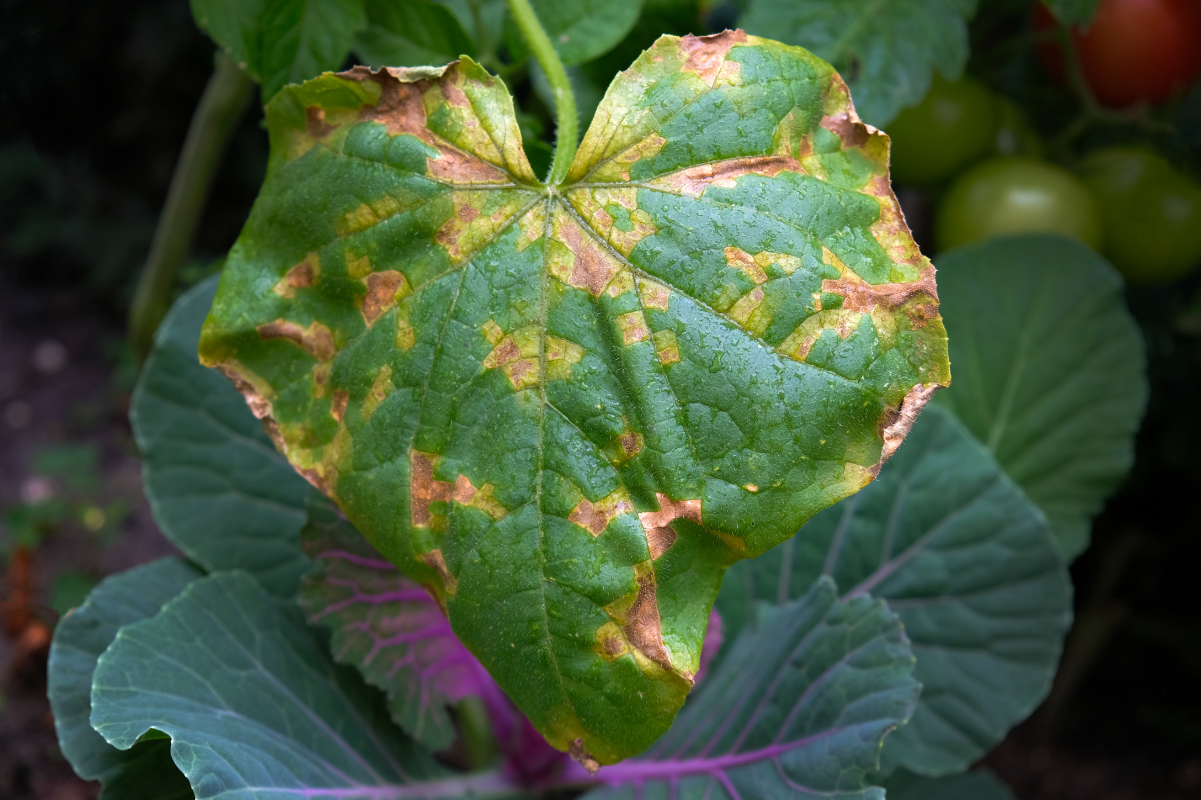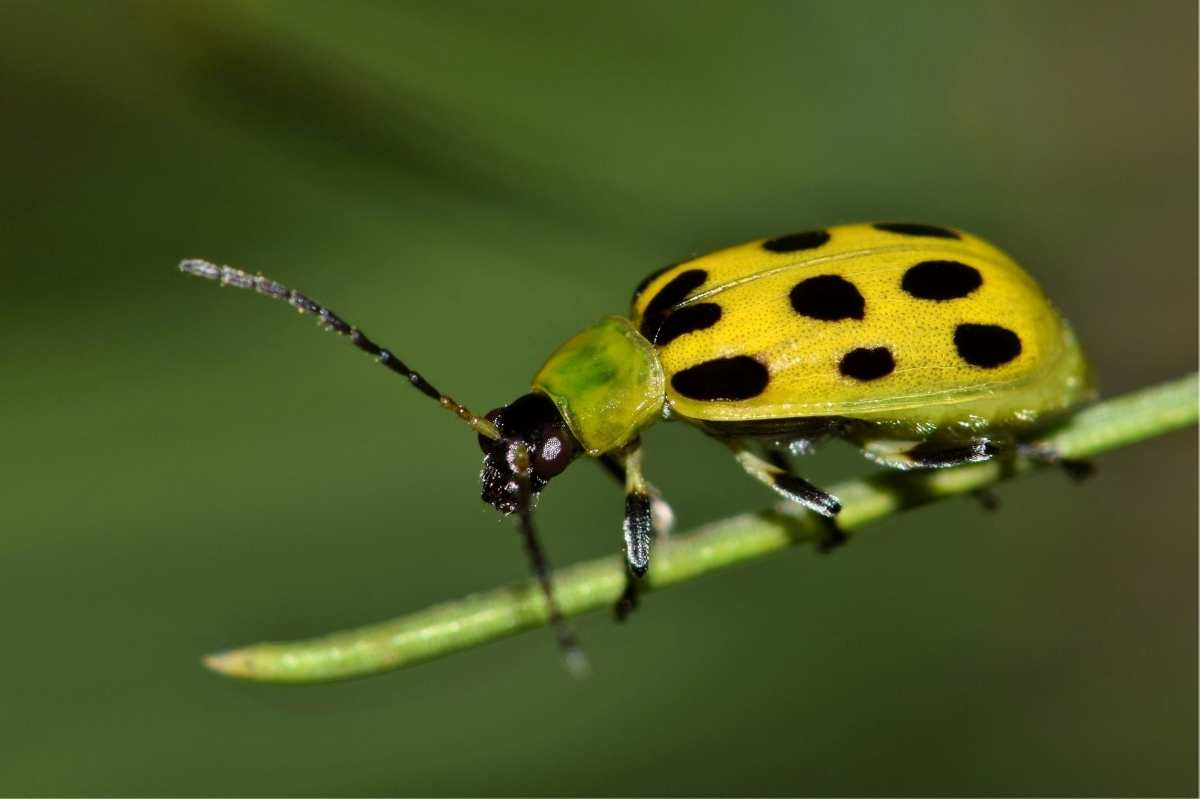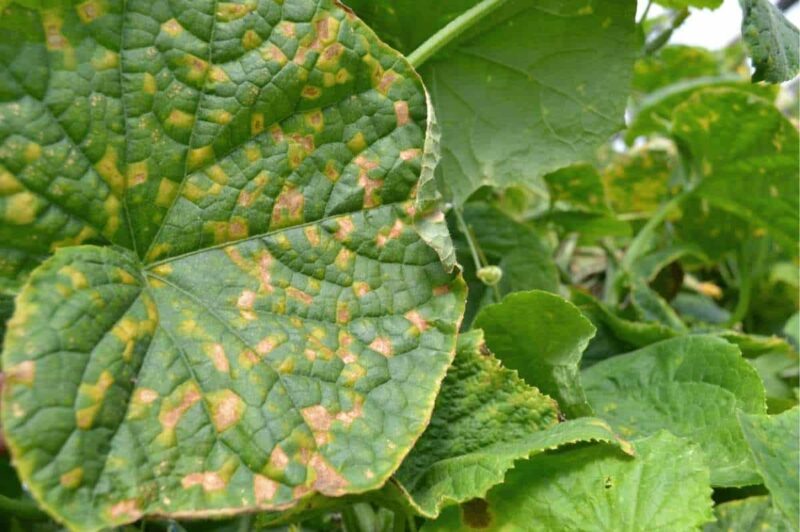Picture this: You’re out tending to the garden this summer, and notice that your cucumber leaves are turning yellow! What do you do? First, you need to know why they are yellowing. Let’s walk through the different causes for yellow cucumber leaves, and how to address each issue!

Why are my cucumber leaves turning yellow?
Most common cause
If cucumber leaves are turning yellow, the most common reason is inconsistent watering. Both overwatering and underwatering can lead to yellow foliage.
How often should I water cucumbers?
Cucumbers are heavy feeders that need consistent moisture. In the heat of summer, water the plants deeply every few days. Use mulch to help the soil retain its moisture levels. When watering, aim the water at the base of the plant, doing your best to keep water off the leaves.
Other causes
- Nitrogen deficiency. Cucumbers are heavy feeders, and will need regular applications of fertilizer. Mix compost into your soil before planting, and then feed the plants with liquid fertilizer every two weeks throughout the growing season. Do not overcorrect and apply too much nitrogen, as this can lead to luscious foliage and stunted fruit growth.
- Aphids. These small insects suck the sap out of new plants. Use yellow sticky traps, garlic spray, and neem oil to deter them, or attract beneficial insects that will prey on the aphids.
- Spider mites. Small yellow spots on the top surface of leaves, along with webbing around the plants, points to spider mites.A blast of water may be enough to get rid of them, but if not, you can also use insecticidal soap.
- Whiteflies. Like aphids, whiteflies suck the sap out of cucumber leaves so that they turn yellow and die. Sticky traps and insecticidal soap can help.
- Downy mildew. Pale green or yellow splotches that are bracketed by the leaf veins may point to downy mildew. Prevention is the best medicine here—keep the foliage dry when you are watering your plants, and space the plants out to allow for air circulation. But if downy mildew has already taken hold, you can treat the outbreak with hydrogen peroxide and baking soda.
- Cucumber mosaic virus. If you see white, yellow, and green mottling on the leaves or the cucumbers themselves, cucumber mosaic virus may be the culprit. The only way to treat this one is to destroy the plants—next year, look for seeds or plants that are resistant to the disease.
- Bacterial wilt. Cucumber beetles can carry bacterial wilt and squash mosaic virus, which can discolor and eventually kill the leaves.Infected plants should be disposed of and destroyed.

How do you fix yellow leaves on cucumber plants?
Prevention is the best medicine when it comes to cucumber leaves turning yellow. When planting your cucumbers and caring for the plants, be sure to:
- Water regularly and thoroughly. Cucumber plants need about one inch of water per week. Water the plants from the base, keeping the leaves dry when possible
- Space the plants appropriately. Air circulation around and through the plants can be vital for disease prevention, especially in the humid conditions of summer. Leave 4-5 feet between plants if you are growing without a trellis, and one foot between plants if you are growing cucumbers vertically. Consult your seed packet to know how much space to leave between your cucumber plants.
- Companion planting. Cucumber companion plants such as dill, marigolds, nasturtiums, and onions can repel bugs, mask the scent of the cucumbers from aphids, and attract beneficial insects to your cucumber plants.
- Fertilize consistently. Fertilize every other week with a liquid fertilizer, such as liquid kelp and fish emulsion.







